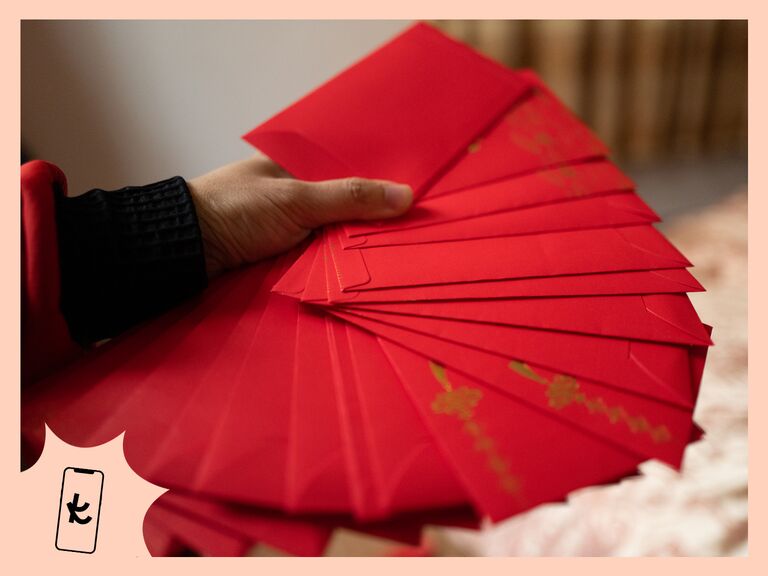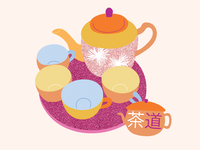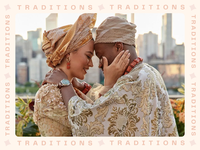Experts Explain the Importance of the Red Envelope Wedding Tradition

While many cultures gift money to newlyweds, several Asian cultures have a red envelope wedding tradition that adds a bit more ceremony to the act of handing over cash. In Chinese culture, as well as other cultures, including Vietnamese and Taiwanese, red is a color that symbolizes good luck and prosperity. Rather than simply giving a check or cash to a couple, wedding guests use a red envelope to hand over their gift. This combines all their well wishes and the money into one package.
Joyce Lee, owner of SYS Event Planning in Atlanta, Georgia, explains that these red envelopes are an integral part of Chinese culture, with married adults often using red envelopes to give children money during the Chinese New Year. But these red envelopes are also used during the wedding ceremony. "Chinese guests frequently bring red envelopes with money inside to give as their wedding gifts to the newlyweds," Lee says.
Want to learn more about multicultural wedding planning and the customs surrounding Asian wedding red envelopes? Here's how Chinese, Vietnamese and Taiwanese wedding traditions approach incorporating red envelopes into modern ceremonies, red envelope wedding etiquette, and exactly how much to give, depending on how close you are with the couple.
In this article:
- What Is a Red Envelope for a Wedding?
- Red Envelope Wedding Tradition
- Red Envelope Wedding Etiquette
- How Much Do You Put in a Red Envelope for a Wedding?
- Where to Buy Red Envelopes for a Wedding
What Is a Red Envelope for a Wedding?
At a wedding, gift-givers hope to offer a symbol of good luck and prosperity to the couple as they embark on a new chapter. "Red envelopes represent joy and happiness. Guests at weddings give the couple red envelopes to help the married couple start their new life together," says Tiffany Lee McCabe, owner of Lee & McCabe. Often, the red envelopes are incorporated into the tea ceremony, which is an important part of the wedding celebration for both Chinese and Vietnamese weddings.
Outside of weddings, one of the most significant times of the year to give a red envelope containing cash is during the Lunar New Year. This is when gift-givers hope to pass along not only the good fortune of money, but also well wishes for luck, positive thoughts and a happy new year.
Red Envelope Wedding Tradition
The act of giving red envelopes is one of the most longstanding traditions across Asian cultures, with its roots in Lunar New Year celebrations during the Han Dynasty, which dates back to the second century BC. Because of red's symbolism as a color that brings good luck and prosperity, it was said that the red envelopes would also ward off any evil spirits ahead of the new year. Often, coins were included within the red envelopes. Over the years, this evolved to incorporate the gifting of money to couples starting their married life. Here's what that looks like across Asian traditions.
Chinese Red Envelope Traditions
When you're planning a Chinese wedding, there's no doubt that the red envelope will come up. It's one of the most treasured Chinese wedding traditions, and it's integrated into the tea ceremony that unites the two families.
"For our wedding, I incorporated a traditional Chinese tea ceremony, which is a symbol of joining two families together," McCabe says. "My husband and I served tea to our family as a sign of respect, and in return, we were given red envelopes from each person after tea was served." There are some cases where the red envelopes may be handed off as soon as guests arrive, but in all cases, it's important that the envelope is given to the couple using both hands.
Vietnamese Red Envelope Traditions
The red envelope is also important in Vietnamese wedding traditions. This is similar to the Chinese tradition, where elders typically give red envelopes to the married couple during the tea ceremony. Khanh Duong, a wedding planner and master of ceremonies originally from Vietnam, says, "Unlike Western weddings where guests typically select gifts from a registry, at Vietnamese weddings, guests almost always bring red envelopes (known as bao lì xì in Vietnamese) containing cash gifts for the newlyweds." Duong explains that even numbers are preferred, though the number four is avoided because it sounds like 'death' in both Vietnamese and Chinese. Numbers like six, for smoothness, eight, for prosperity, and nine, for longevity, are ideal.
"I've seen firsthand how this tradition creates a beautiful moment of connection when guests personally present these envelopes with heartfelt wishes during table visits or tea ceremonies," Duong says. "It's these meaningful exchanges, rather than unwrapping physical gifts, that create some of the most touching moments throughout the wedding celebration."
Taiwanese Red Envelope Traditions
In Taiwanese wedding traditions, wedding guests also give the happy couple a money-filled red envelope. Ruby Chen, a Taiwanese wedding planner, explains that this tradition isn't solely limited to weddings. "The first red envelope a person typically receives is shortly after birth, followed by others to mark important milestones while growing up. Even in the workplace, it's common for supervisors or clients to give red envelopes as a gesture of appreciation," Chen says.
If there is a tea ceremony, the envelopes are given to the couple at that time, using both hands as a sign of respect. "Red envelopes may also be given to members of the wedding party, vendors, servers and anyone who contributes to the celebration, as a token of gratitude. Beyond showing appreciation, this gesture also symbolizes sharing joy and good fortune with everyone involved," Chen explains.
Red Envelope Wedding Etiquette
With the red envelope as such a critical part of the wedding ceremony, there's no worry about how to ask for money instead of gifts. It's a given that guests will opt for cash over gifts. But there are specific nuances around how the envelopes are given. "Traditionally, in Chinese culture, red envelopes are given by the elders or married couples. When given a red envelope, we accept with both hands and say thank you," McCabe says. "The envelope should not be opened in front of the giver."
Lee recommends that elders in the wedding discuss the process ahead of time with the couple and whether or not there will be a tea ceremony. It's not just the parents and grandparents who may be involved, and any elder in the tea ceremony should have a red envelope prepared. "Sometimes the couple will present tea to the aunts, uncles and elder cousins, so it is best to find out if you are supposed to be on the receiving end of the tea ceremony to avoid being empty-handed when they call your names during the tea ceremony," Lee explains. She also notes that the couple will sometimes put cash tips for their wedding vendors in red envelopes.
How Much Do You Put in a Red Envelope for a Wedding?
The amount you'll put in a red envelope for a wedding depends on several factors, including your relationship to the couple, as well as the culture of the wedding. If you're wondering how much to put in a red envelope for a Chinese wedding, McCabe says, "It depends on the relationship the guest has with the couple. Typically, the closer the relationship, the more money you receive." However, she notes that it's important not to give any amount with the number four in it, as four symbolizes death.
Lee adds, "Traditionally, Chinese people also try to keep track of how much they receive from each other so that when it is their turn to give back, they know how much they need to give back to their friends." For the exact amount, Chinese weddings will often put lucky numbers in the envelopes. "Chinese will pick lucky numbers that end with eight, which is a lucky number in Chinese culture, or a number that is a round number," Lee says. Nine is the one exception to the round or even numbers rule, since nine represents longevity.
The Chinese wedding red envelope amount is similar to the Vietnamese or Taiwanese wedding red envelope amount. All three cultures value even numbers, particularly those ending in eight, with most guests giving amounts up to $500, for example, $188 or $288.
Where to Buy Red Envelopes for a Wedding
Depending on whether you're looking for beautifully designed envelopes or hoping to customize your red envelopes, there are multiple places to buy red envelopes to have on hand for weddings and celebrations. And, if you're on the receiving end, you can keep these envelopes for both sentimental and utilitarian use. "My husband and I keep the red envelopes that are given to us and we reuse them every Lunar New Year," McCabe says.
- Pearl River Mart: You can find a variety of sizes and designs of ready-made red envelopes for use at weddings, celebrations and Lunar New Year festivities. Buy in bulk to be prepared for years to come.
- Zazzle: For a more personalized approach, look to Zazzle, where you can add your name and address to the back, making it easy for the couple when it comes time to work on thank-you notes.
- Etsy: Whether you want beautifully crafted, high-end red envelopes or a customized look, Etsy has thousands of makers creating red envelopes. A quick search can be narrowed down to exactly the look you have in mind.




















